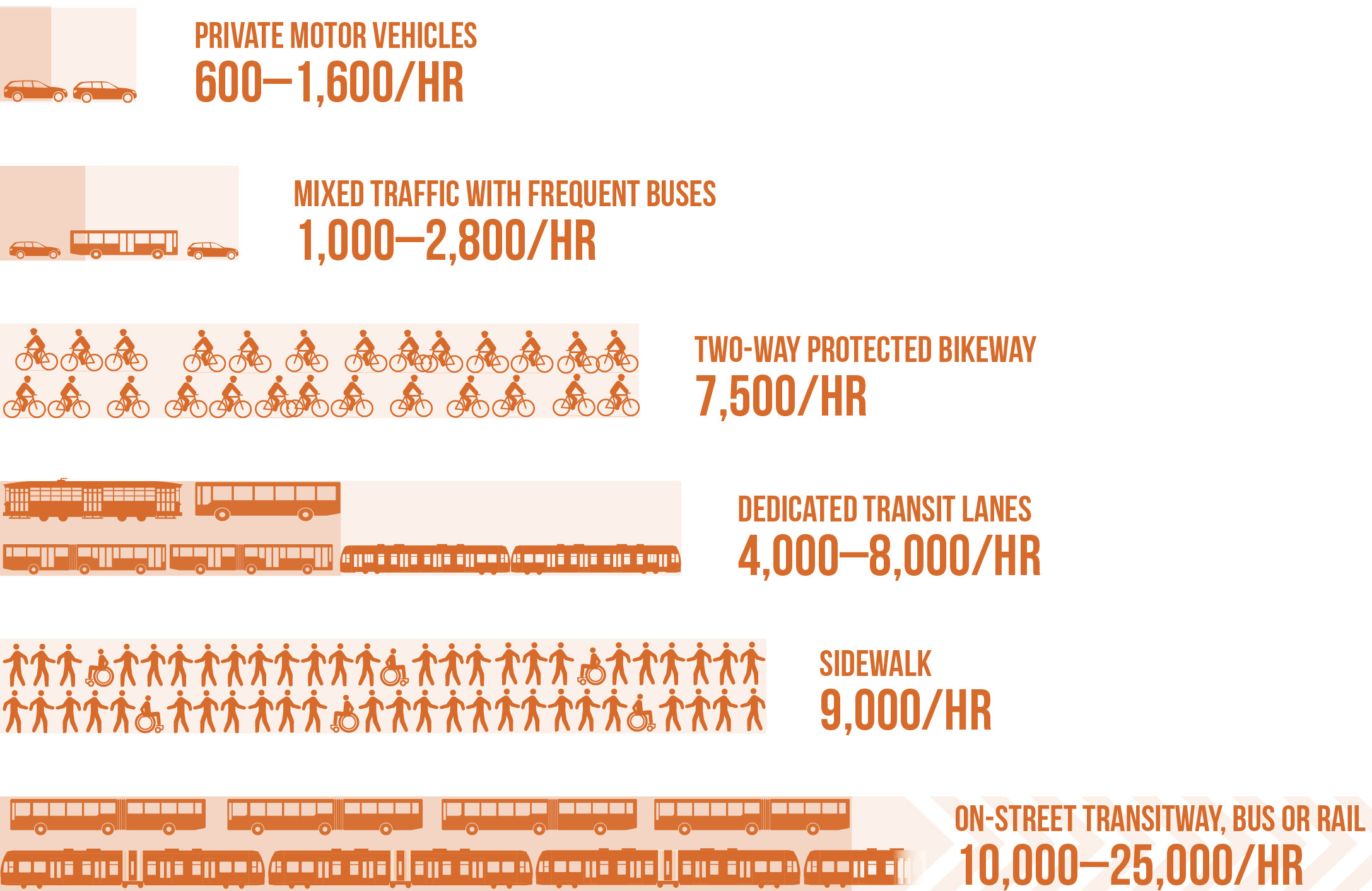 |



Free shipping within the United States (except Alaska & Hawaii). Contact us to arrange shipping outside the U.S. Display Prints use fine quality Epson paper. (All prints sent unframed.) |
|
THE PAVED CITY 30% of the average American city is pavement (source). That is, 30% of the American city, land that could be housing, businesses, parks, museums, or other public infrastructure, has been given over to roads and parking lots. Each of the posters above represents the city of Minneapolis. The colored lines represent our pavement. Each poster depicts the same ratio of pavement to city land, but in a different way. The Twin Cities metro has approximately 28,000 miles of car lanes (source) and just over 200 miles of bike lanes (source). Many people argue that we need so much pavement because cars are the economic engines that make our cities work. Those people are wrong. If you're running a business, do you want more cars or do you want more customers (and workers)? People are the economic engines of cities. People are the shoppers and the workers. People make and spend the money. Cars carry those people and their money on roads, and roads are terribly inefficient at the job of transporting economic engines. For example, according to NACTO, the carrying capacity of the average traffic lane is 600 cars per hour (1,600 people). Turn that same car lane into a train and cities can move up to 25,000 people per hour! That's way better. Like WAY better. 
So why do we have 28,000 miles of car lanes and just 23 miles of light rail? Trains are expensive. Minneapolis' ongoing effort to build just 14.5 miles of new track is projected to cost $2.74 billion (source). Even accounting for the cost of cars, this is 2-3 times the cost of similar capacity road miles. (Minneapolis' car lanes COULD carry 45 million people in cars. The same number of people could travel on just 1,800 miles of train track. Those 1,800 miles of track would cost 2-3 times as much as 28,000 miles of car lanes. Approximately.) That's a tough sell. But consider the economic impact of replacing just half of our roads and parking lots with train tracks. We could reclaim 17 square miles of our city. That's enough space for 45,000 houses apartments (source) and 113,000 people (source), economic engines spending and making money in our city, supporting businesses, paying taxes. When it comes to the cost of operation, mass transit wins every time. Turns out the average cost of owning a car is $10,700 per year (source). The cost of unlimited Metro Transit rides in Minneapolis is $1,440 per year (source). Of course, public transit is subsidized. Rider fares don't cover all of the costs of operating our trains and buses. And gas taxes don't cover all of the costs of maintaining our roads. That isn't factored in here. The bottom line is this: cars are not an efficient way to transport people and paving our cities is no longer an efficient way to drive economic activity. American transportation systems are inefficient and over-consume our land because they were redesigned in the 1950s to move cars. They need to be redesigned again to move people. Because cars and people are not the same thing. What can we do to reduce pavement and make space for people? Support initiatives to reform zoning regulations. Specifically, work to eliminate parking minimums (as Minneapolis has done) so that parking lots can be replaced with housing units. And of course, choose to reduce car miles by getting on the bus, train, or bike. (Many of the calculations provided here use averages and back of the envelope math which works pretty well and gives a broad picture. But we would love to see your math and, if it paints a better picture, we will update The Numbers here.) |